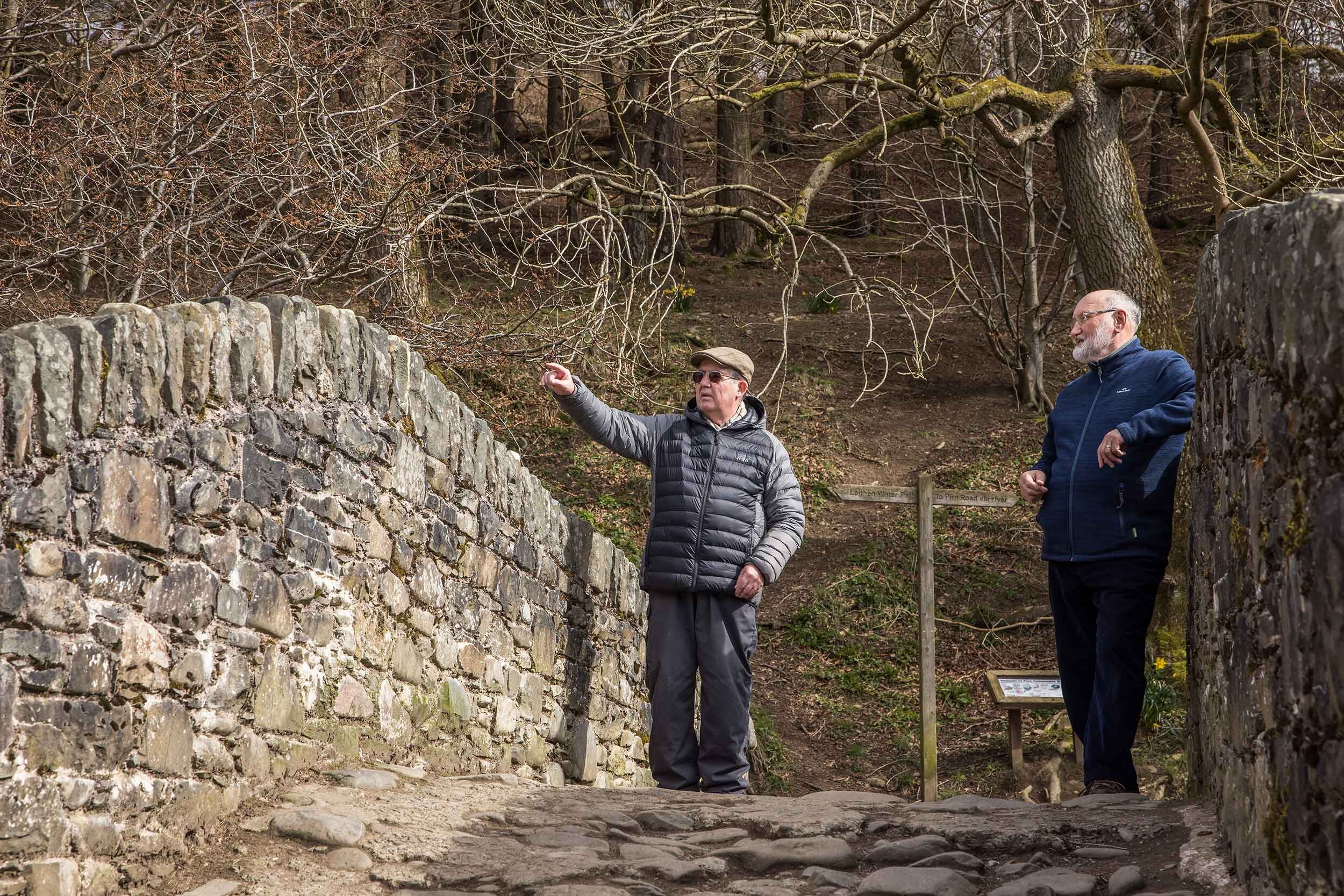Heritage walks
Innerleithen through and through, we meet Ross McGinn and Ted McKie – a pair of walking guides who are passionate about sharing stories of the town’s rich cultural heritage.
Ted (left) and Ross at the Cuddy Bridge, Innerleithen
THEY MAY not thank us for pointing it out, but Ross McGinn and Ted McKie have more than a century of combined knowledge of Innerleithen – a town once powered by textile mills, but which has since reinvented itself as an outdoor activity hotspot.
For Ross, Innerleithen has been home his entire life, while Ted’s association began a little later: a Fifer by birth, he moved here more than 60 years ago at the age of 14. Together, they have witnessed the evolution of a town that, while modest in size, has a remarkable number of stories to tell.
And it’s these stories, plus a smattering of myth and legend, that Ross and Ted recount in a programme of heritage walks held from May to October. Ranging from the mills that once powered the area’s economy to ancient bridges, Iron Age hill forts, the healing waters of St Ronan’s Wells, the town’s sports heritage, plus the many characters who have shaped the history of the area, there is certainly no shortage of material.
Signage in Pirn Wood
“Of course, Innerleithen is a very different place to when I was growing up, not least with the disappearance of the mills,” notes Ted, an accomplished amateur historian and author of two books on the town.
But while now silent, or in most cases gone altogether, the mills remain hugely relevant to the story of the town. “In terms of heritage, they made Innerleithen what it is,” explains Ross. “If the mills were running today, they would be multi-million-pound businesses given the income they brought to the area and the employment they provided. Everyone here had a link to them.”
“There is the story of the Leithen Water and how it served the mills, but there is also St Ronan’s Wells and the health-giving water that it produces, plus of course there is the Tweed itself.”
Innerleithen’s renown as a textile area was thanks primarily to the natural qualities of the Leithen Water – a river that tumbles through the town before emptying into the nearby Tweed. Carefully channelled and harnessed, the Leithen provided not just a vital source of power for the mills but also a particular type of water that proved ideal for processing woollen textiles. “The garments produced in the mills were of a quality not achieved anywhere else because of the softness of the water,” explains Ross.
A fish ladder at the cauld, Leithen Water
“One of our walks focuses purely on water,” adds Ted. “There is the story of the Leithen Water and how it served the mills, but there is also St Ronan’s Wells and the health-giving water that it produces, plus of course there is the Tweed itself.”
Easy company, and each with a rich turn of phrase, it’s no surprise to hear that Ross and Ted’s walks are informal and wide-ranging. People are encouraged to stop at any time and ask questions. “We often end up talking about all sorts of things we might not have planned to cover!” says Ross.
But the walks are not just a trip down memory lane. As they take visitors from the High Street to the modern-day sculptures on the site of an Iron Age fort on Pirn Hill, and much in between, they look forward as well as back in celebration of a town that is now very different, but no less lively.
Created by local artist Mary Kenny, the set of seven sculptures on Pirn Hill tell the story of Innerleithen
Today, it’s the landscape, lifestyle and activities such as mountain biking that attract people rather than the call of the mills, but some things haven’t changed. “It’s still a vibrant community,” notes Ross. “There have always been characters here, and I suspect there always will be!”
Further info
Find out more about Ross and Ted’s heritage walks on our Led by Locals page. And for much more on the cultural and industrial heritage of the area, visit Past Innerleithen (created by Innerleithen Community Trust).
Photography: Ian Linton




